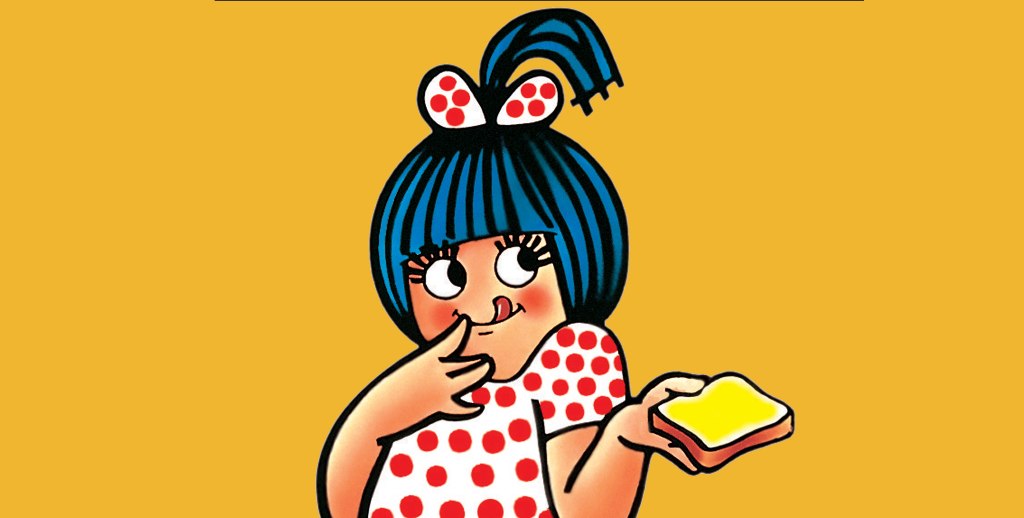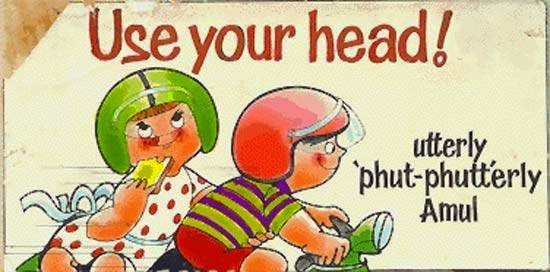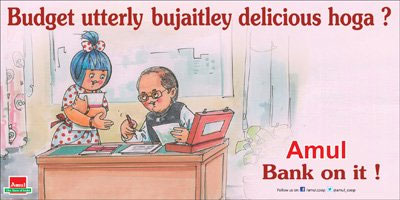She’s a little girl of 54, and she will never age. The Amul mascot has gone beyond butter to become an indelible part of Indian life, writes Prabhakar Mundkur
“Amul is the answer to your wishes, utterly butterly delicious”. I can still hum the first radio jingle first created for Amul butter, now long forgotten by everyone. I was anxious during my trip to Anand in the winter of 1977. I was taking a trip with Sylvester da Cunha (one of India’s original mad men in the world of advertising), Managing Director of Da Cunha Associates, the ad agency for Amul, and not looking forward to the early-morning flight to Baroda which meant I would need to reach the airport at 4.30 am.
This was my first job in advertising and somehow Sylvester had already instilled a fear into me, common with young trainees in their first job. From the Baroda airport we were to take a taxi to Anand. I was overcome by the awe of meeting with Dr Kurien. For a young advertising trainee a few months old, it was overwhelming to meet a man of Dr Kurien’s towering stature.
Dr Verghese Kurien, better known as the Father of the White Revolution, brought dignity and fame to the concept of social entrepreneurship when it was not yet fashionable to be a social entrepreneur. India went from a milk deficient nation to a milk surplus one thanks to Dr Kurien, and achieved the remarkable feat of making India the largest milk producer in the world. He also made a great success of the cooperative movement which until then was riddled with politics and vested interests.
But the great innovation for Amul was that India, unlike other countries, had mainly buffalo milk rather than cow milk. And skimmed milk powder had never been made from buffalo milk so when Dr Kurien supervised this process, India became the first country to do so because technology was available only for making skimmed milk powder from cow’s milk. Later, making cheese from buffalo milk was also considered a first.
Dr Kurien had realised that the buffalo lactates more in winter, producing an oversupply of milk during the winter months. Making other milk products like skimmed milk powder, cheese, etc was a dire necessity to prevent the excess supply of milk in winter from getting wasted. Kurien established the GCMMF (Gujarat Cooperative Milk Manufacturers Federation) to sell milk products of different dairies under a common name Amul (Anand Milk Union Limited ). Until Amul came onto the scene the butter market was dominated by Polson, a dairy brand which was started in India by Pestonjee Eduljee in 1915 in Mumbai. Incidentally Polson’s dairy was also set up in Anand.
Looking back at the Polson brand, it also had a girl mascot although she was a serious mascot in the style of all the old early 20th century brands, not entertaining like the Amul girl. I can’t help feeling that the idea of a little animated girl as a mascot for Amul was inspired to be a ‘counterpoint’ to the Polson girl. And a great counterpoint it was in retrospect, because Amul killed the Polson brand.
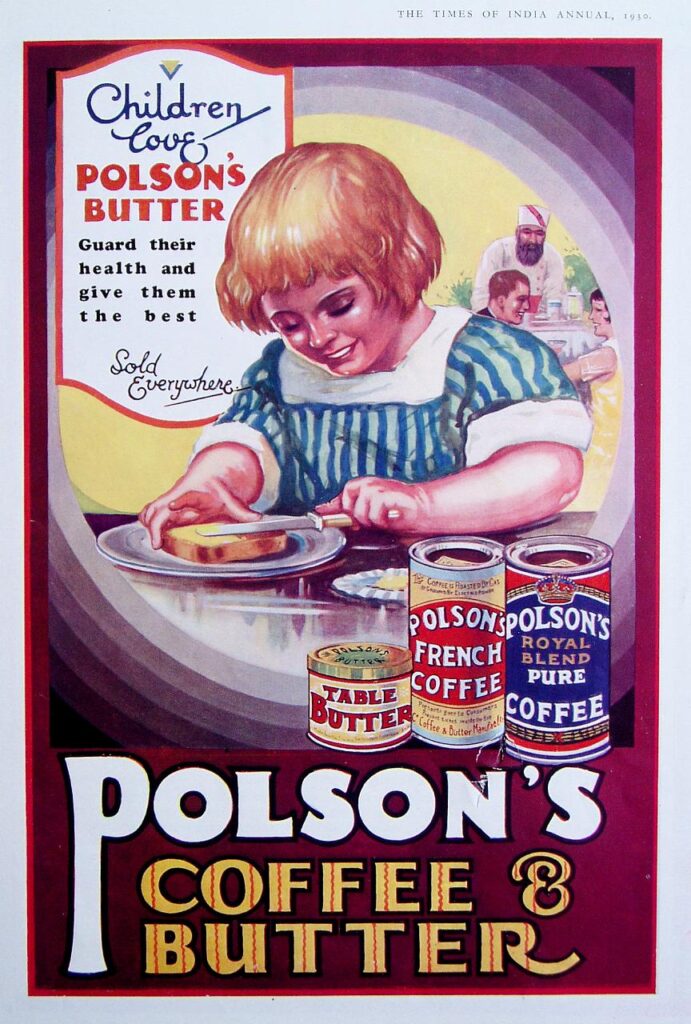
The brand Amul was registered in 1957. It was Sylvester’s idea to come up with a mascot. A child rather than an adult like the Maharajah, the Amul girl soon became an enigmatic figure entertaining the Indian audience. Legend has it that it was Sylvester and his wife Nisha who came up with the tag line for the brand ‘Utterly Butterly’ delicious. Although ‘butterly’ was a made-up word, it seemed to hit the right chords with its audience. The caricature of the Amul girl was created by Eustace Fernandes, an art director who worked with Sylvester da Cunha.
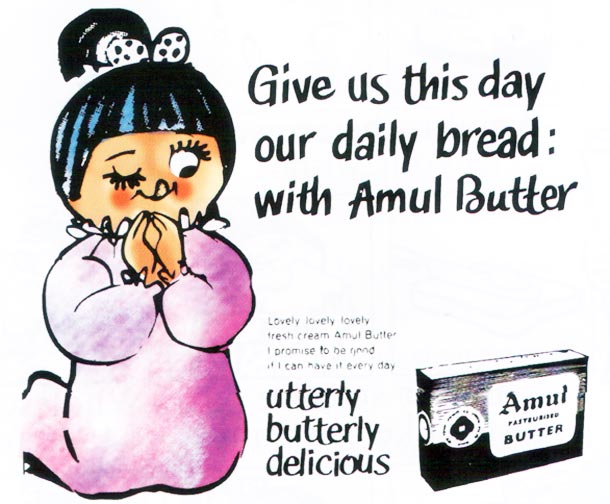
Soon the Amul girl took over some of the attention from the Air-India Maharajah, first created in 1946 by Bobby Kooka and Umesh Rao, an art director with the erstwhile J Walter Thompson. Both these brands became the country’s two commentators on current affairs through their billboards in strategic locations throughout the country. Along with RK Laxman’s cartoons with the common man, and the Air India Maharajah, the Amul Girl entertained India with her commentary on the current affairs of the nation, always bringing a smile to the face of the viewer. Soon the Amul girl also acquired a brother, who perhaps was less popular but provided the Amul girl some male company adding a touch of humour to every subject in the country.
The magic of the Amul advertising was that it had something to say about every top-of-mind subject in the country. The Amul girl celebrated the happy moments in our life and made fun of the sadder moments, thereby lightening the burden of daily life.
Logos can give a company a name and recognition but mascots give companies a personality. A mascot also gives immediate recognition to a brand and can build trust with consumers. The Amul girl could talk, jump, dance, laugh, shed a tear, and give advice when needed, bringing her to life just like a very real person.
Surely the Amul girl, with her blue hair, pony tail and polka-dotted frock, rates amongst the best mascots in the world of advertising. She is also testimony to the fact that wit, satire and humour works well in advertising. The Amul girl turned fifty-four this year but is still the most lovable little girl that you could ever meet.



